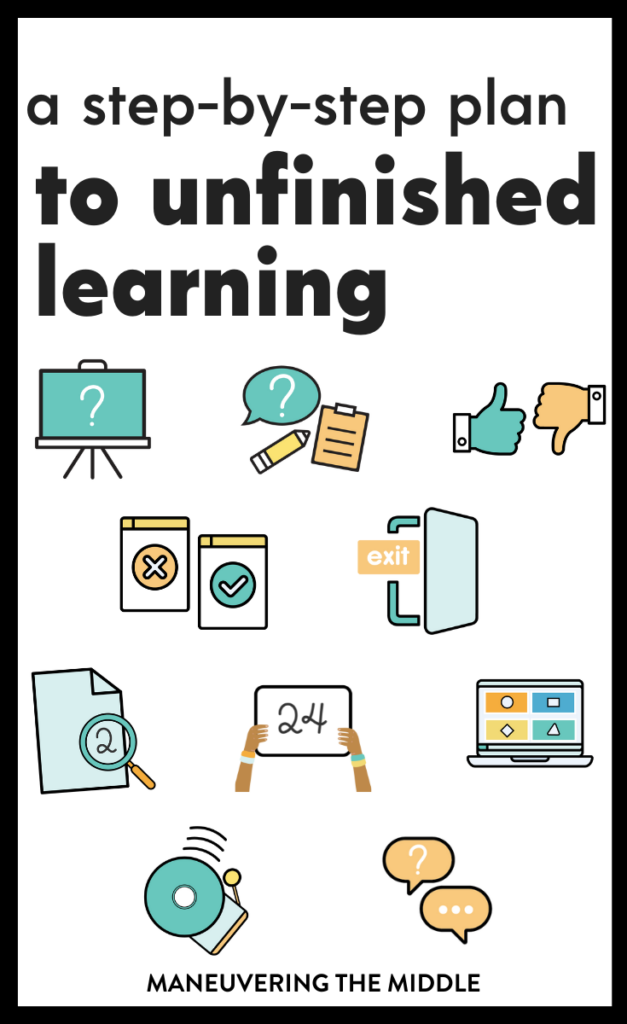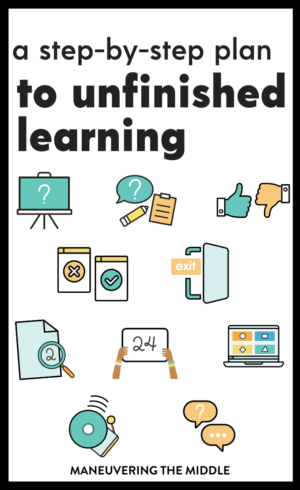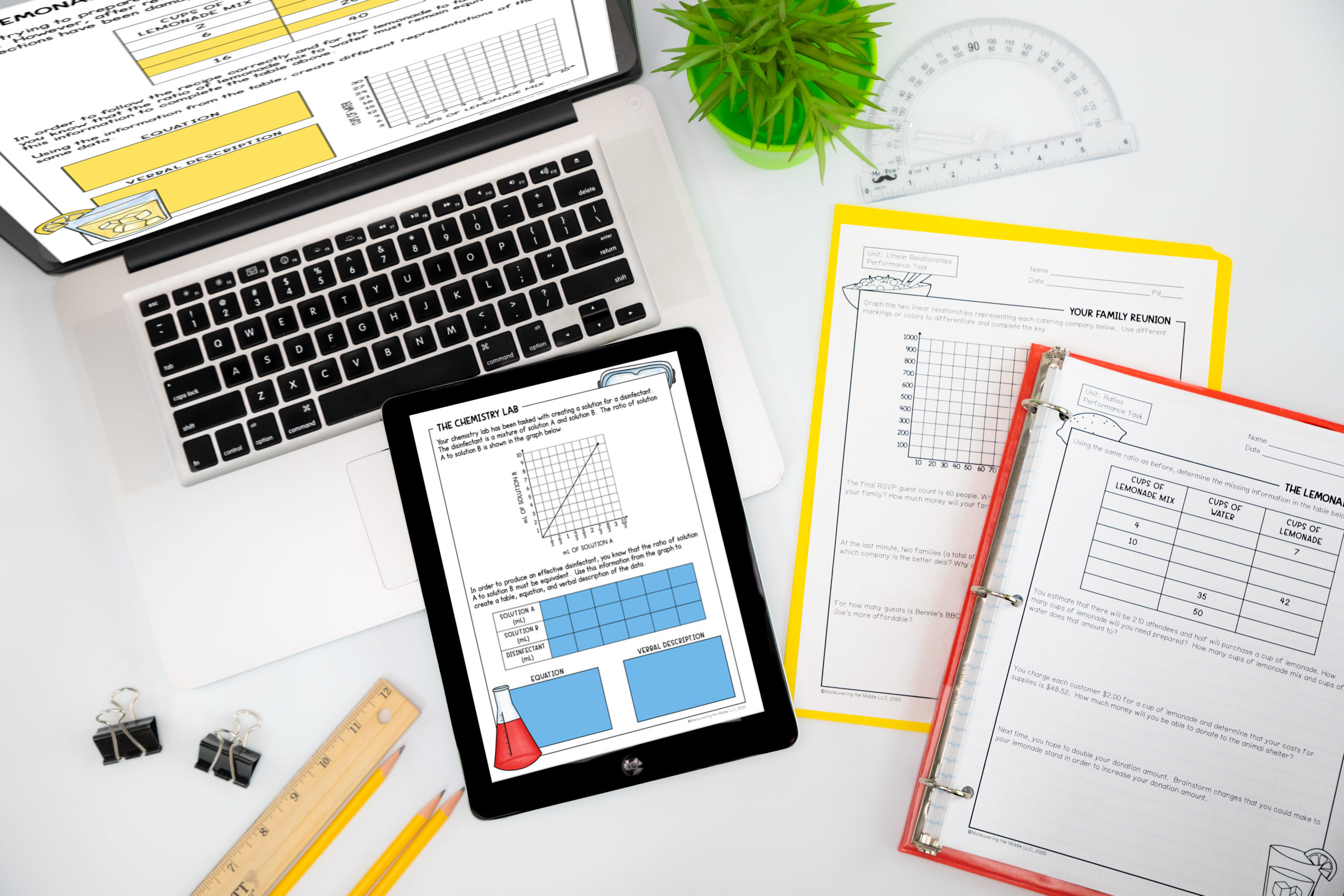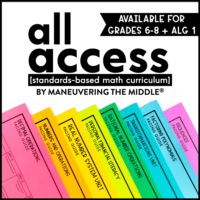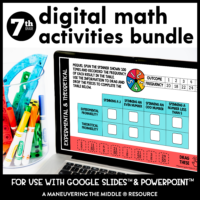In July, Noelle presented an incredible training about what teachers can do to combat unfinished learning in math. Because the information was so relevant and useful, I thought it would be helpful for it to exist in a blog post as well.
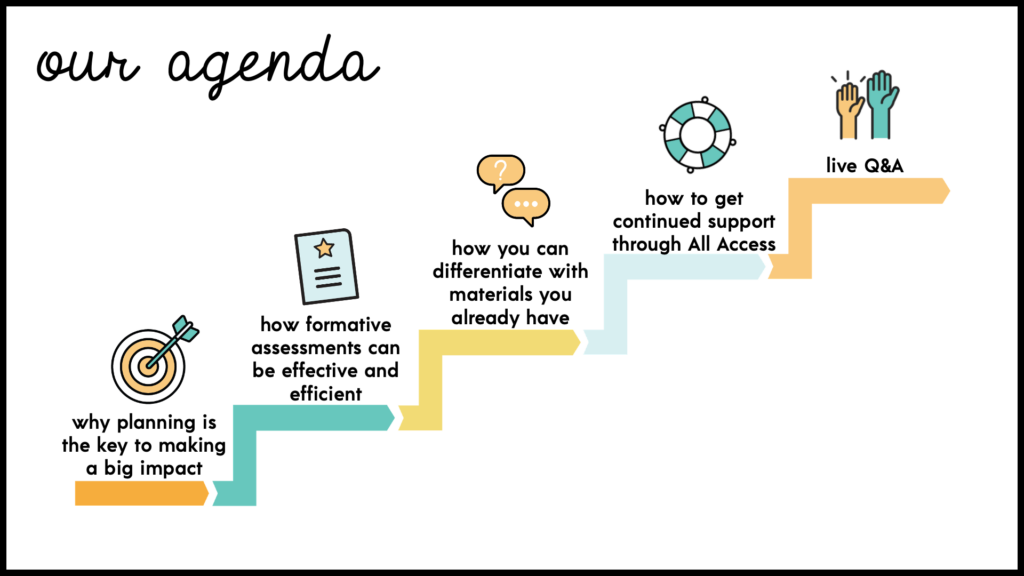
When your students aren’t where you want them to be, it can be easy to just keep trucking along. Ignoring the unfinished learning in your classroom is a sure way to be frustrated when your students aren’t making the gains you are hoping for.
Keep reading if you want to learn more about creating a sustainable plan for tackling the unfinished learning in your classroom so you can serve students well, without sacrificing your sanity and mental health.
What is unfinished learning?
Concepts or skills that have not yet been mastered – can be from yesterday or years ago.
For example, your students may have never mastered squares and square roots. Where would this unfinished learning be present? Pythagorean theorem.
Unfinished learning can be addressed through planning, formatively assessing, and differentiating.
Step 1: Planning
Determine what the standard is asking students to do and how they are expected to do it. Consider the potential challenges students may face. If you haven’t taught this content before, you may need to ask a fellow teacher what common misconceptions students may face tackling that specific skill.
For example, in teaching the Pythagorean Theorem, you may spend much of your lesson on solving for the missing side using the formula, only to realize that students can’t differentiate between the hypotenuse and the legs.
When presenting the concept, provide multiple ways of solving. This is obviously easier said than done. I love the CRA framework, so be sure to check out the linked post for more context. You can provide multiple ways to solve by:
- Making the math concrete (introduce hands-on opportunities like manipulatives)
- Giving math context (create some real-world connections)
- Visualizing the concept (drawing pictures)
Step 2: Observation through Formative Assessments
Formative assessments do not need to be formal. Using what you already have is effective and efficient! Here are some simple ways to assess:
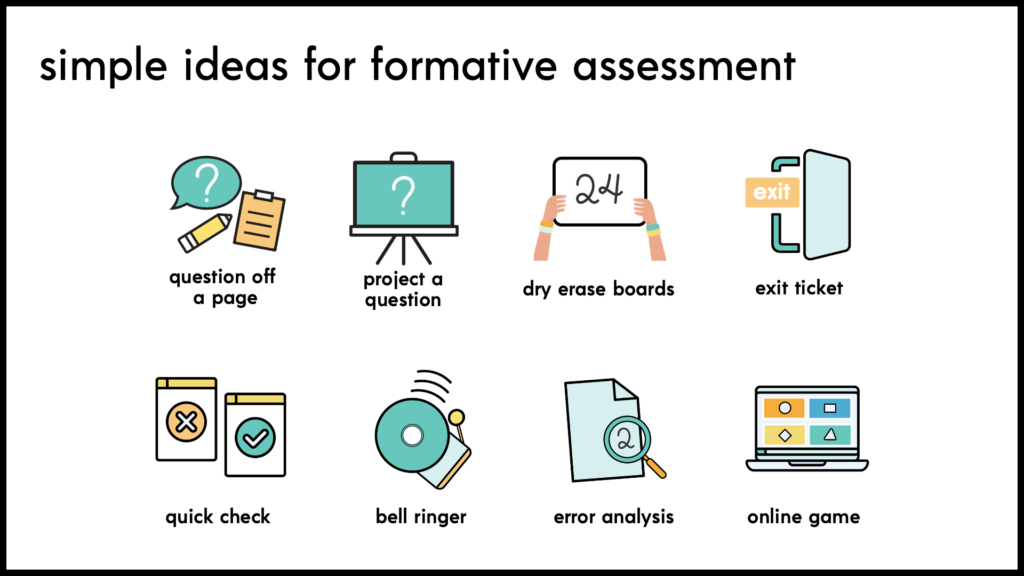
White boards are a favorite of mine! By observing through formative assessments, we can use our time and energy to address any misconceptions early on.
Step 3: Adapting using just-in-time supports
What is a Just-in Time support? It is a support provided based on a demonstrated need.
How do we adapt just in time?
When observing your students’ work, there are two outcomes. Either students are correct and can continue working, or students demonstrate a misunderstanding and it is time to act.
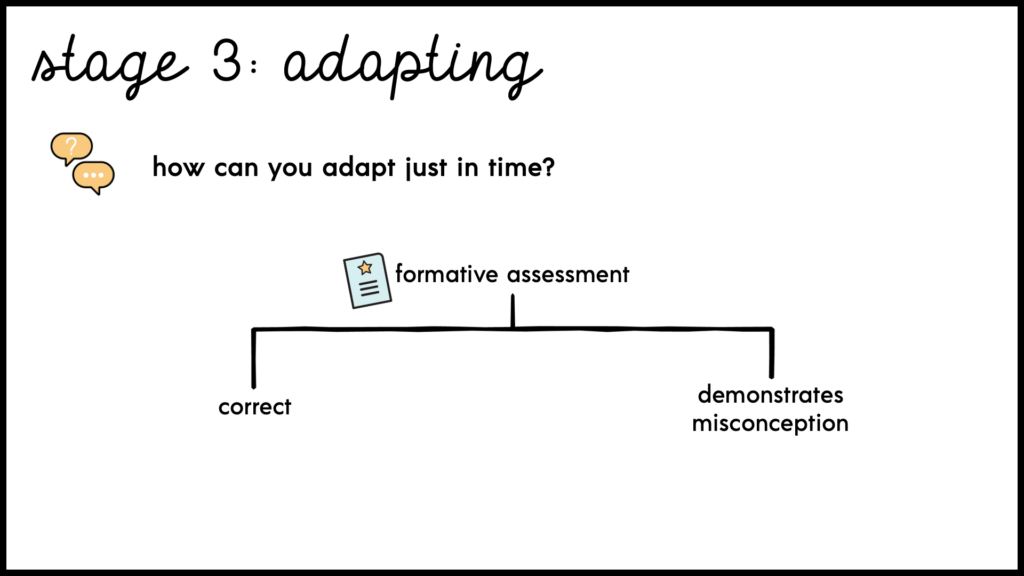
If you already have task cards on your agenda, you don’t have to change it. The rest of your class works on task cards in groups; the students who demonstrated a misconception join you at your small group table where you have an extra set of task cards already organized from easiest to most difficult. As you work with your students, start by asking guiding questions.
- “What do you know?”
- “What do you need to know?”
- “What can we do to get started?”
Swapping the values is another quick way to differentiate for students that are demonstrating a misunderstanding. Let’s say that your students are working on surface area. You don’t want to spend lots of time readdressing how to multiply fractions or decimals. You are working on surface area after all. Swap the numbers! That way you can focus on what students need to understand to calculate the surface area of different 3D figures instead.
Error analysis is a great way to create an extension for your students, as well as address misconceptions. For students who got it when formatively assessed, you could push them to analyze how the incorrect answers were constructed. For students who need additional support, you can share the correct answer and scaffold your question in a small group.
Making small adaptations to an activity allows us to support students with unfinished learning, without the pressure to reinvent the wheel. The process outlined is ongoing – daily, weekly, all year long, so don’t get discouraged.
All Access is a great tool for tackling unfinished learning. Since the stress of planning is done for you, you can use your energy to implement these tips.

How do you combat unfinished learning in your math classroom?
